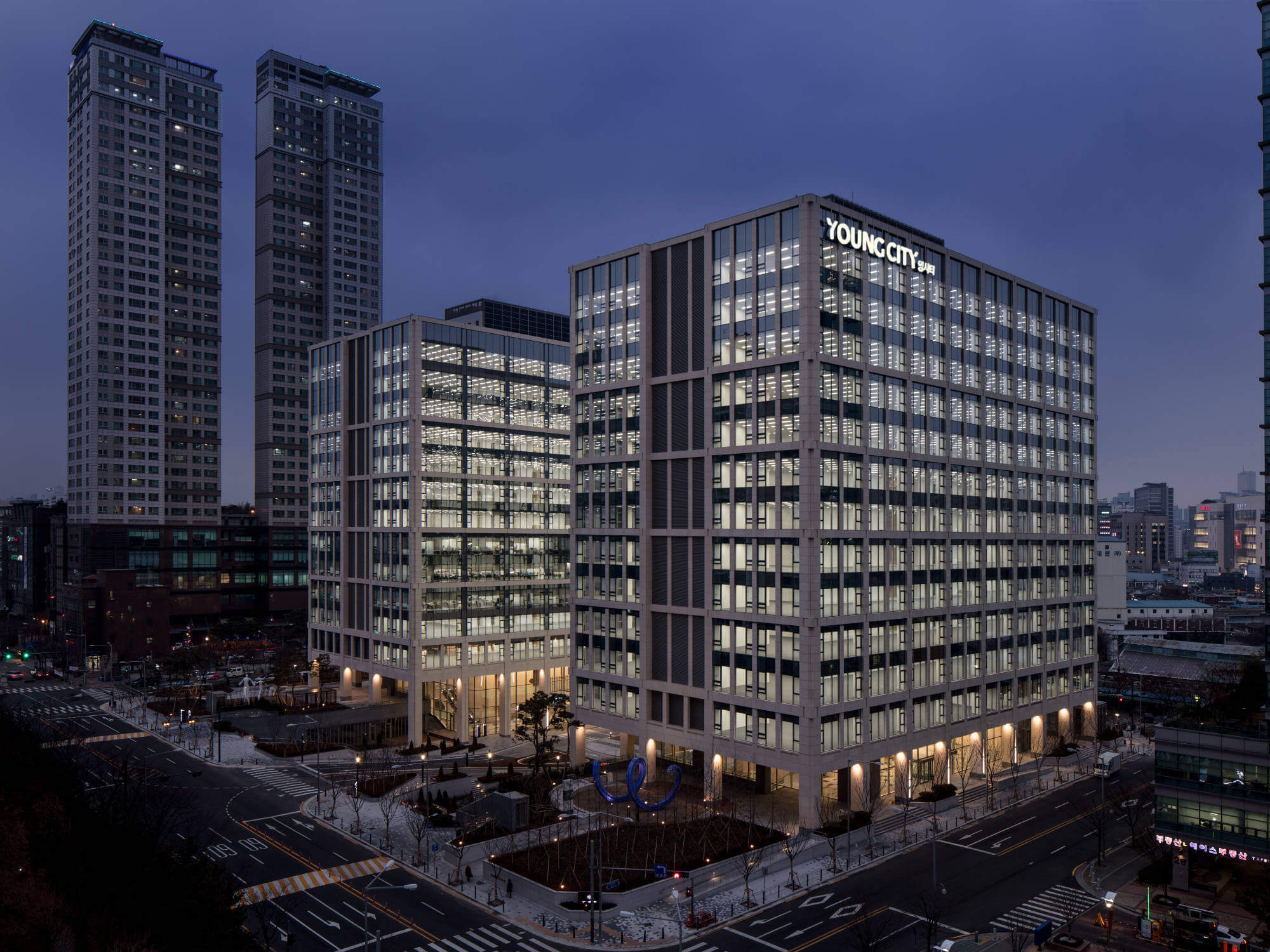Young City, a development of over 99,000 sq m of high specification office space in the southwest of Seoul, is an excellent example of how the provision of significant equity capital in a market where such funding is scarce, together with the use of sensitive and market-led design, can help regenerate degraded industrial land and improve the environment and economic prospects for local residents while also generating substantial returns for investors.
The opportunity
Following rapid property development often completed at low cost during the 1970s, Korea’s real estate inventory is hitting a major refurbishment cycle at the same time as demand among end-users and investors for high quality buildings is increasing. Yet the market faces considerable challenge in meeting this new demand.
In 2014, Standard Chartered’s Asian Principal Finance Real Estate team, which was acquired by Actis in 2018, identified a tract of land in the southwest of Seoul in a low income, but well-connected neighbourhood. With a clear understanding of local market dynamics, the team spotted the opportunity to build cost-effective, high quality office space to meet demand from local and international businesses for high specification back office space.
What did we do?
Despite strong competition, the team’s approach enabled the firm to secure the land at an attractive price. It identified Korean conglomerate SK D&D, a trusted partner with a reputation for delivery, to develop and manage the asset in a joint venture.
The provision of equity capital for the development unlocked debt financing, which enabled the project to go ahead. This alone added significant value in a market where such capital is scarce. This lack of funding is rooted in wake of the Asian crisis, when construction companies, facing liquidity problems could no longer make long-term equity commitments, leaving the market open to small, local developers, many of which could not develop full sites. With adequate capital and full control over design, construction and management, Young City could be developed as a whole site and – importantly – according to the needs of today’s tenants.
On acquiring the land in 2014, the team worked with architects and future tenants to redraft the design to widen the buildings, incorporate taller ceiling heights, improve air flow and reduce the number of floors from 30 to 13. This new design created highly flexible space for tenants, enabling more workers per floor, an important consideration for those seeking to consolidate their locations. Young City’s more than 99,000 sq m floor area is larger than comparable new projects in Seoul and features 12-metre column-free space to accommodate large, open plan offices while also allowing for the easy division of space so that multiple tenants can occupy each floor.
Tenants are also increasingly looking for buildings that can assist them with meeting their goals around sustainability. In line with this, the design was created, and the development built, to conform to high environmental standards. Young City was certified under Korea’s green building standards and includes a number of environmentally sustainable features, such as solar panels for energy generation. Successful real estate development relies on strong engagement in areas where the surrounding community is affected by the construction of new buildings – and this is particularly the case in poorer neighbourhoods. Throughout the development, SK D&D worked closely with local residents to ensure disruption during the development was kept to a minimum, with measures put in place to mitigate noise and dust and compensation provided for local residents.
In addition, following consultation with local residents, we provided funding for a scholarship through a foundation owned by the local education authority. This helped the local community through the creation of a more attractive educational environment – a key factor in enhancing residential areas in Korea.
Thanks to the partnership with SK D&D and the team’s tight control over the development, it was completed in 2017 – both on time and under budget. The creation of Young City has seen the clean-up of what had been degraded and toxic industrial land, helping to improve the environment for local residents and boosting the local economy. It has also seen the construction of a landmark building in an area undergoing extensive redevelopment. As such, Young City has made a valuable contribution to regenerating the district and making it a clean, attractive place to live and work. Bringing up to 5,000 workers to this area of the city, it draws footfall to local businesses as well as offering new employment options in the neighbourhood.
Future developments
Young City is now more than 50% leased, including to anchor tenant Citibank, which chose the development as the site to consolidate its Korean locations, and further tenants are expected to sign over the coming months. Since Young City entered the Actis portfolio, we have also refinanced the construction debt at a competitive cost. The site now offers modern, flexible and high quality office space in an area with good transport links, including easy subway access, at an attractive price for local and international businesses.
1 Young City was originated and managed by the Standard Chartered Principal Finance Real Estate team, until it transferred to Actis in 2018, following our acquisition of the business and its portfolio. The acquisition brings Actis and strong team with a good track record and strong assets in the portfolio, evidenced by rigorous due diligence. The transfer of the team and assets significantly strengthens Actis’s capability and capacity in the Asian real estate market.
